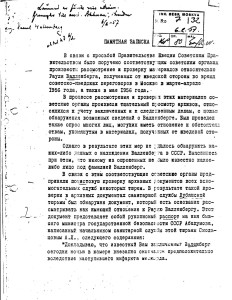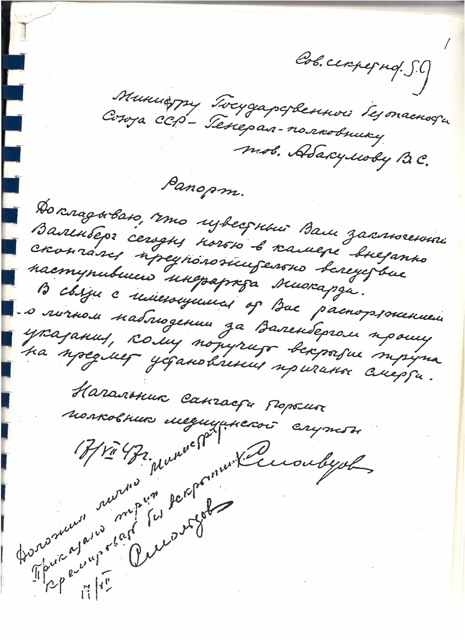Raoul Wallenberg and his killers
Google translation from russia. Rearranged by Maribeth Barber.
Raoul Wallenberg. Was prisoner number 7?
Radio Liberty published a letter from independent researchers Vadim Birstein and Suzanne Berger, a qualitatively new turn in the case of Raoul Wallenberg. Additional details of the case – in a conversation with one of the authors of the letter Vadim Birstein.
Swedish diplomat Raoul Wallenberg saved the lives of tens of thousands of Hungarian Jews in 1944 by issuing protective passports to so-called “Swedish subjects” awaiting repatriation to their homeland. After the capture of Budapest by Soviet troops, he was arrested and taken to Moscow, where he was kept in the MGB inner prison in the Lubyanka. For many years, Stockholm unsuccessfully tried to discover the prisoner’s fate. In February 1957, Moscow officially made it known to the Swedish government that Wallenberg had died of a myocardial infarction on July 17, 1947, in Lubyanka Prison. In support of this version the Soviets presented a document–a report from the chief of the medical unit inside the prison, Smoltsov, addressed to Interior Minister Viktor Abakumov. This version did not satisfy the Wallenberg family, which holds high social status in Sweden.
In 1990, Vadim Birstein and current chairman of the Memorial Society, Arseny Roginsky, gained access to some of the archival collections of the MGB-KGB. In April 1991, I, as editor of the international department of the newspaper Nezavisimaya Gazeta, published an article by Vadim Birstein « The Mystery of the Prisoner number seven« , which presented the preliminary results of the study and questioned the official Soviet account of Wallenberg’s death. Subsequently, Moscow and Stockholm agreed to continue the work of the bilateral commission. However, in 2001, the Commission concluded that the search ended in a stalemate, and ceased to exist.



